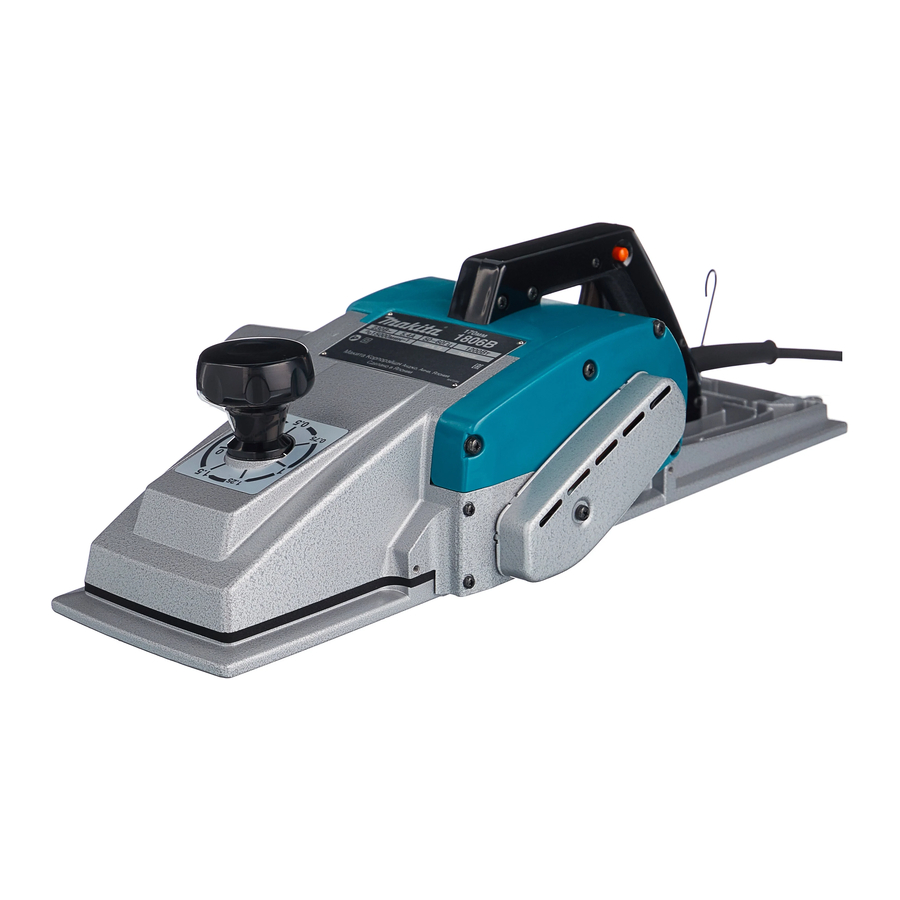Makita 1806B 사용 설명서 - 페이지 8
{카테고리_이름} Makita 1806B에 대한 사용 설명서을 온라인으로 검색하거나 PDF를 다운로드하세요. Makita 1806B 17 페이지. Power planer
Makita 1806B에 대해서도 마찬가지입니다: 부품 분석 (3 페이지), 사용 설명서 (13 페이지), 사용 설명서 (10 페이지), 사용 설명서 (13 페이지), 사용 설명서 (11 페이지)

(A) Front base (Movable shoe)
(B) Rear base (Stationary shoe)
Correct setting
Nicks in surface
Gouging at start
Gouging at end
OPERATION
1
1. End
2. Start
8
For the correct planer blade setting
Your planing surface will end up rough and uneven, unless
the blade is set properly and securely. The blade must be
mounted so that the cutting edge is absolutely level, that is,
parallel to the surface of the rear base.
Below are some examples of proper and improper settings.
(A)
(A)
(A)
Planing operation
002578
First, rest the tool front base flat upon the workpiece surface
without the blades making any contact. Switch on and wait
until the blades attain full speed. Then move the tool gently
2
forward. Apply pressure on the front of tool at the start of
planing, and at the back at the end of planing. Planing will be
easier if you incline the workpiece in stationary fashion, so
that you can plane somewhat downhill.
The speed and depth of cut determine the kind of finish. The
power planer keeps cutting at a speed that will not result in
jamming by chips. For rough cutting, the depth of cut can be
increased, while for a good finish you should reduce the
depth of cut and advance the tool more slowly.
Although this side view cannot
show it, the edges of the blades
(B)
run perfectly parallel to the rear
base surface.
Cause: One or both blades fails to
have edge parallel to rear
base line.
Cause: One or both blade edges
fails to protrude enough in
(B)
relation to rear base line.
Cause: One or both blade edges
protrudes too far in relation
(B)
to rear base line.
EN0004-1
